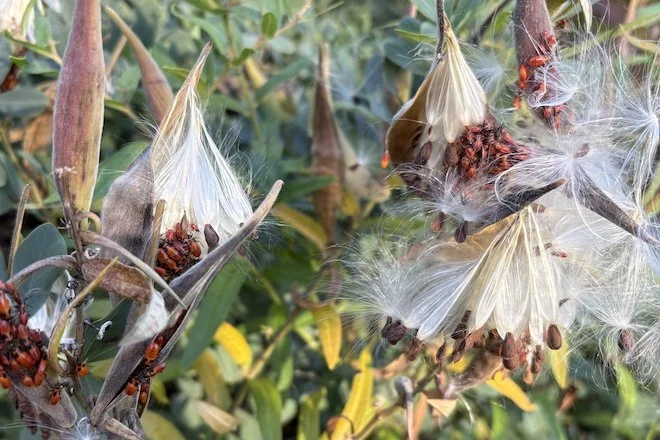This week: Are Milkweed Bugs friends or foes?
Hello!
If you grow milkweed, you may have noticed more than just Monarch caterpillars feasting on the plants. You’ve likely seen at least one form of a Milkweed Bug (Oncopeltus fasciatus). This fall, my Milkweed seed pods are smothered in Milkweed Bug nymphs, and while somewhat disturbing, it is absolutely fine.

Adult Milkweed Bugs are half an inch to three-quarters of an inch long and have distinctive coloring: reddish orange bodies with black accents. Most notably, adults will have a black stripe at their mid-back, accompanied by a black diamond-shaped spot above and below it. Another dead giveaway that they are Milkweed Bugs is that they are found on or near Milkweed plants.
Remarkably, Milkweed Bugs molt five times before they reach their adult form. The ones pictured are likely from the first or second molting. They’ll molt every five days or so, developing their wings and spots incrementally. Once they’re adults, they live for about a month. Their primary food source is Milkweed seeds, and sometimes seeds from other relatives in the Dogbane family.
Milkweed Bugs don’t harm the plant or any caterpillars that may also be eating the plant. They don’t even really share food—the caterpillars are chomping on the leaves, while the bugs are sucking sap out of the seedpods. It’s best to let them be, lest you do accidental harm to any phase of the Monarch butterfly lifecycle.
Elsewhere:
PBS News Hour visited a Pawpaw festival and dug into the history of this fine fruit. Watch the clip.
Have a great week,
Julie